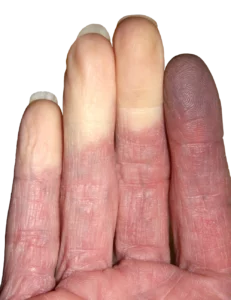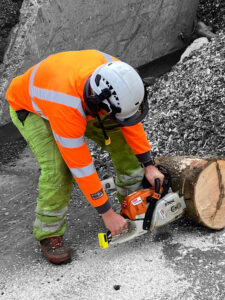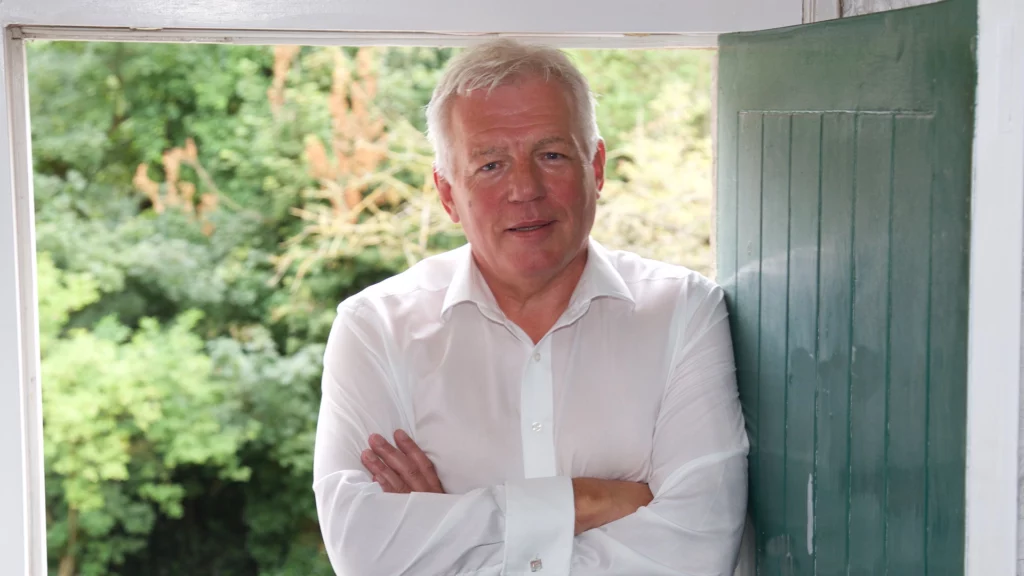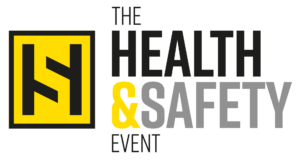 In 1999, the Government reached a compensation deal worth £500million in the High Court which would see tens of thousands of former coal miners eligible to claim a share as a result of developing vibration white finger (VWF). It would be the first significant step in making HAVS History but what has happened since then?
In 1999, the Government reached a compensation deal worth £500million in the High Court which would see tens of thousands of former coal miners eligible to claim a share as a result of developing vibration white finger (VWF). It would be the first significant step in making HAVS History but what has happened since then?
Over exposure to vibration levels can result in a variety of different health conditions from VWF, otherwise known as “Dead Finger”, HAVS (Hand Arm Vibration Syndrome), Carpal Tunnel Syndrome (CTS), Dupuytren’s Contracture (a thickening of a layer of tissue under the skin at the base of your fingers which can cause fingers to curl), Raynaud’s (affects your blood circulation) and a variety of others.
170,000 claims have been handled under the Vibration White Finger (VWF) Compensation Scheme, mainly from former miners, who have had their lives affected by the impact of vibration white finger, and other health conditions.
But the story doesn’t end there…
Whilst the Government compensation scheme is now closed to claimants, those affected by over-exposure to vibration levels live on with the health conditions affecting their daily lives.
This is the story of one sufferer who has a dream that just won’t go away.
Russ Langthorne started his career as a Mining Craft Apprentice working in the coal mining industry. As part of his apprenticeship, he worked with a whole host of hand held tool and equipment, many of which emitted vibrations.
The amount of time spent on these tools varied but often exceeded the levels that would be permitted today. This exposed him to considerable vibration levels, and ultimately, resulted in him developing HAVS and Dupuytren’s Contracture in both hands. The link between Dupuytren’s disease and vibration exposure was first made in a study in France that ran between 2002 and 2004 and a subsequent review of this study was carried out in 2012 which concluded that: “Vibration exposure affecting the hand using the vibrating tool was an occupational risk factor associated significantly and strongly with the prevalence of Dupuytren’s disease.”
Russ' Goal: Making HAVS History
As the stats above show, this isn’t unusual and, unfortunately, Russ is one of many people to suffer in this way. Vibration over-exposure has an irreversibly damaging impact on the bodies and lives of those who are not protected adequately. But it doesn’t have to be this way.
It is entirely preventable and, with the right risk management and continuous measuring and monitoring in place, we can Make HAVS History.
This is Russ’ goal, so when the opportunity to work with a company that was designing, developing and manufacturing a product in the UK, that would continuously and accurately measure and monitor vibration levels, in real-time, he jumped at the chance.
Russ saw it as a golden opportunity to make a genuine difference for generations to come. Here he explains what drives him;
“I am all to aware of the pain and impact HAVS and associated health conditions cause. I think of new generations of workers, men and women, experiencing the same and worse, and it drives me to make changes. This is entirely preventable, and it should be something we talk about as part of history, not as something in the present!
“In 2019, there were more than 300,000 HAVS sufferers in the UK – this is appalling given there are regulations and technologies available that should be reducing this number to almost nothing! With more than 2 million people at risk of developing HAVS in the UK, there should be more being done to reduce the amount of new cases each year to almost nothing.
“There are two issues that need to be looked at simultaneously if we are going to seriously reduce the number of workers suffering: improved monitoring and measuring technology and a tightening of the regulations in line with the latest technological developments.
“Developing HAVSPRO, with Sixis Technology, has allowed me to create a system that continuously measures, monitors, and reports, the accurate amount of vibration being produced and that the user is being exposed to. No calculations, algorithms or assumed data, just actual vibration levels, at that moment in time, with those specific variables reported in HSE points.
“I am incredibly proud of this technology because it allows employers to easily and accurately manage the risk of vibration exposure for their employees, and therefore reducing the instances of HAVS, and the associated health conditions, down to almost zero.
“We have designed, developed and manufacture this technology in the UK, all within the Group which means we can employ strict controls to ensure quality. This gives our customers the confidence to roll it out across their businesses knowing they are protecting their staff and businesses.
 “Supporting this technology, we also provide a comprehensive consultation service where we work with an organisation to identify all potential areas of risk and create a complete solution to help them manage it to as low as possible. We use our technology to measure and monitor the risks and provide data-driven action plans to reduce the risk down to ALARP and protect the operatives and business holistically.
“Supporting this technology, we also provide a comprehensive consultation service where we work with an organisation to identify all potential areas of risk and create a complete solution to help them manage it to as low as possible. We use our technology to measure and monitor the risks and provide data-driven action plans to reduce the risk down to ALARP and protect the operatives and business holistically.
“Now the technology is here, we just need the regulations to catch up and mandate employers to continuously measure and monitor vibration levels. I understand the reasons for not doing this in 2005, the technology wasn’t there and managing risk was a time-consuming and arduous task for employers and workers. The purpose of the regulations is to protect, not hinder, and making measuring and monitoring vibration levels a continuous activity would have been nearly impossible, but that is no longer the case. With technological developments, so must legislative developments follow.
“This is a danger that the HSE regulations, as they are, could be leading employers into a false sense of security. By this I mean, the regulations promote ALARP (as low as reasonably practicable) which often leads to the promotion of lower vibrating tools being recommended or used. However, this can often be a false economy and lead to a lower vibrating tool being used for much longer than a higher vibrating too which would ultimately lead to a higher number of HSE points being accrued by the operative. Without continuous measuring and monitoring of vibration exposure in real time, it’s difficult to ensure you are managing levels ALARP, as specified by the regulations.
“The reporting and analysis of this data is the other half of the technology we have developed and it is the key to managing risk. The data captured in the reporting suite gives you everything you need to manage the risk of HAVS and excessive vibration levels with no arduous paper-based sheets for workers or supervisors to complete.
“Together we are Making HAVS History and that’s what get’s me out of bed every morning!”
Sixis Technology launched HAVSPRO in May 2022 with one focus; to #MakeHAVShistory. Their industry-leading technology is tool-mounted to measure vibration levels in real-time and inline with BS 5349, as experienced by the operator. They are then reported back to the employer via a cloud-based dashboard of statistics that make monitoring and managing the risk of vibration levels a quick and convenient task.
Russ’ passion to deliver technology that eliminates HAVS, educate employers on the need to continuously measure and monitor, and realign the regulations to better protect employees, is infectious!
Follow Russ on LinkedIn to find out how his mission to #MakeHAVSHistory is going.
Find out more about HAVSPRO and how it can help you protect your staff and business: 01332 547 148 or you can download our Employers Guide to HAVS
Download the HAVSPRO Brochure
Discover how HAVSPRO monitors vibration levels accurately and triggers alerts to protect your staff and organisation against the risks of HAVS and WBV (whole body vibration).
It monitors individual tool vibration levels and the exposure each person has to it.
HAVSPRO then collates all this data and creates customisable reports to help you prevent overexposure.
Find out everything you need to know in our brochure – simply complete the form!
 by
EngageBay
by
EngageBay



